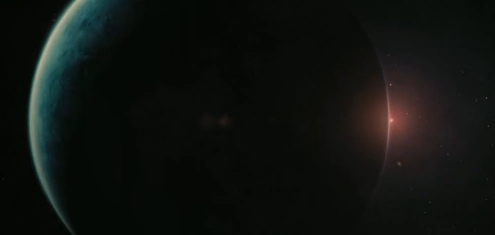[Editor's Note: Our NYFF coverage begins! You'll be hearing from Michael and Kurt and me. -Nathaniel]
Hey, everybody. Serious Film’s Michael C. here reporting from the New York Film Festival. I’m jumping right into the deep end of the pool with the first title so let’s get to it.

When the world ends in Lars von Trier’s Melancholia it is definitely going to be with a bang and not a whimper. The film opens with a stunning series of images centered around a rogue planet spinning out from behind the sun on a course to smash into Earth like a wrecking ball. It’s a dark nihilistic death dance, the B-side to Tree of Life’s sun-dappled song of life. The sequence alone is worth the price of admission.
From there the film splits neatly into halves. The first concerns the wedding of clinically depressed bride Kirsten Dunst to “aw shucks” wholesome groom Alexander Skarsgård. The second concerns Dunst and sister Charlotte Gainsbourg grappling with the whole possible destruction of the planet thing. Both halves follow similar arcs with characters hoping against hope that the worst case scenario can be avoided before remembering that this is, after all, a von Trier movie.
 I’m not sure splitting up the stories was the wisest choice, since the second half never recovers the energy of the wedding scenes. I could write that the second half creaks under the weight of its symbolism, but if Von Trier is willing to fill the sky with an ominous death planet named after his own depression, who am I to point out that the whole thing is a bit "on the nose"?
I’m not sure splitting up the stories was the wisest choice, since the second half never recovers the energy of the wedding scenes. I could write that the second half creaks under the weight of its symbolism, but if Von Trier is willing to fill the sky with an ominous death planet named after his own depression, who am I to point out that the whole thing is a bit "on the nose"?
Melancholia would have to qualify as a minor disappointment considering the shattering impact Von Trier is capable of, but still, it's an experience worth having. The whole cast is aces. Dunst rises to the occasion with a bone deep convincing portrayal of smothering depression, while Kiefer Sutherland, to my surprise, punches through in a big way as Gainsbourg’s wealthy put-upon husband. Best of all, is the wall to wall breathtaking cinematography by Manuel Alberto Claro, which, by the way, is probably the film's best shot at awards attention. The whole thing has a cumulative effect greater than the sum of its flaws.